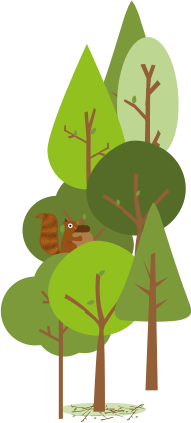

Blog
Adventures in Nature

So what DO we do when it rains at forest school? This is a question we often get asked and running projects in Yorkshire, its unavoidable that it will happen. Our projects are all outdoors taking place in public woodlands with no indoor venue to escape to. So the simple answer is that everyone gets a bit wet and muddy. For most people, this is fine – it can be great in fact, but for some this is a bit of a surprise! If school instigates indoor playtime if its raining or parents insist that you’ll catch a cold if you get wet, children can start to believe that there is something inherently wrong with rain.
“Autumn carries more gold in its pockets than all the other seasons.” Jim Bishop

We’ve been making the most of some beautiful autumn days with bright sunshine and beautiful autumn colours at our Forest School Play Project with Better Start Bradford. Our three new nurseries started their sessions at the end of September and have seen the children enjoying throwing and playing in the leaves, playing games of hide and seek, balancing along the trunks of fallen trees, making natural artwork and exploring the woodland. (more…)
“Everything good, everything magical happens between the months of June and August” Jenny Han
 What a summer of magic it has been; the days were long, the sun shone and we had a full programme of forest school and outdoor play happening across Yorkshire. The long hot summer brought all the generations outdoors to summer events and it was great to meet so many of our existing clients and make new ones at our stand at the Great Yorkshire Show in July. When our term time programmes in Bradford and Dewsbury came to an end, we switched straight over to the holiday schedule and were busy all summer long with our popular holiday forest schools and community programmes.
What a summer of magic it has been; the days were long, the sun shone and we had a full programme of forest school and outdoor play happening across Yorkshire. The long hot summer brought all the generations outdoors to summer events and it was great to meet so many of our existing clients and make new ones at our stand at the Great Yorkshire Show in July. When our term time programmes in Bradford and Dewsbury came to an end, we switched straight over to the holiday schedule and were busy all summer long with our popular holiday forest schools and community programmes.
“The grass grew green again and the woods were full of wild flowers” The Little House on the Prairie

With our new practitioners Sam and Lizzie in place, the Forest School Play Project began in May, the start of a 3 year programme of outdoor learning and play with young children in inner city Bradford. (more…)

In my previous blog post I wrote of mud and ice, and how we were looking forward to spring. Two months later and we feel like we’re only just getting there. The Beast from the East and weeks more rain meant that our Easter holiday forest schools were some of the muddiest on record. But as our photos posted on our Facebook page show, our forest schoolers are a hardy bunch and took it all in their stride with lots of creative muddy play. I love this tweet from one of our freelance practitioners, Ruth McBain … (more…)

